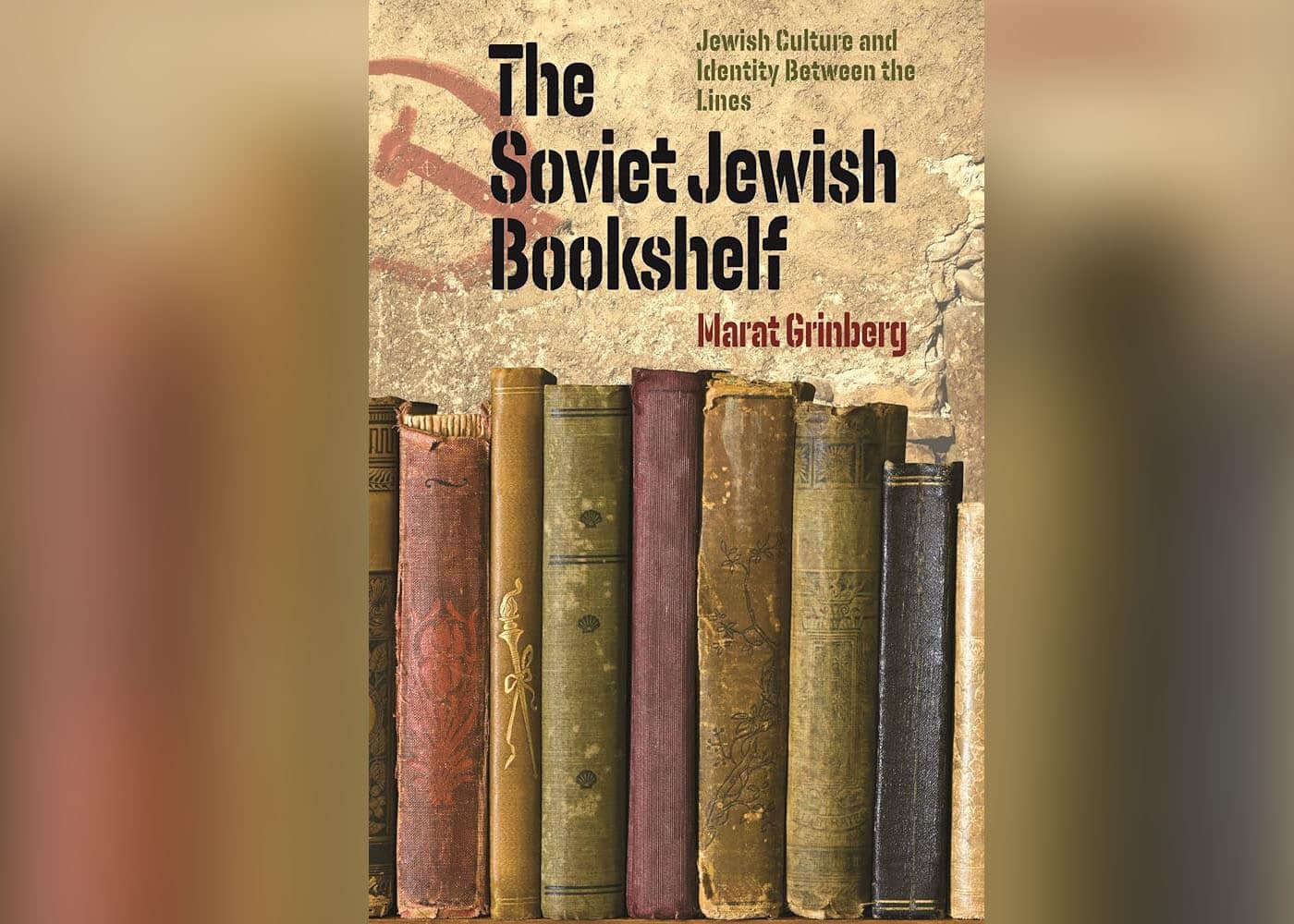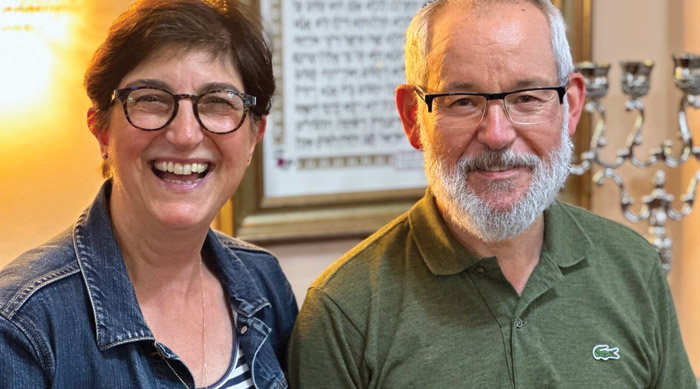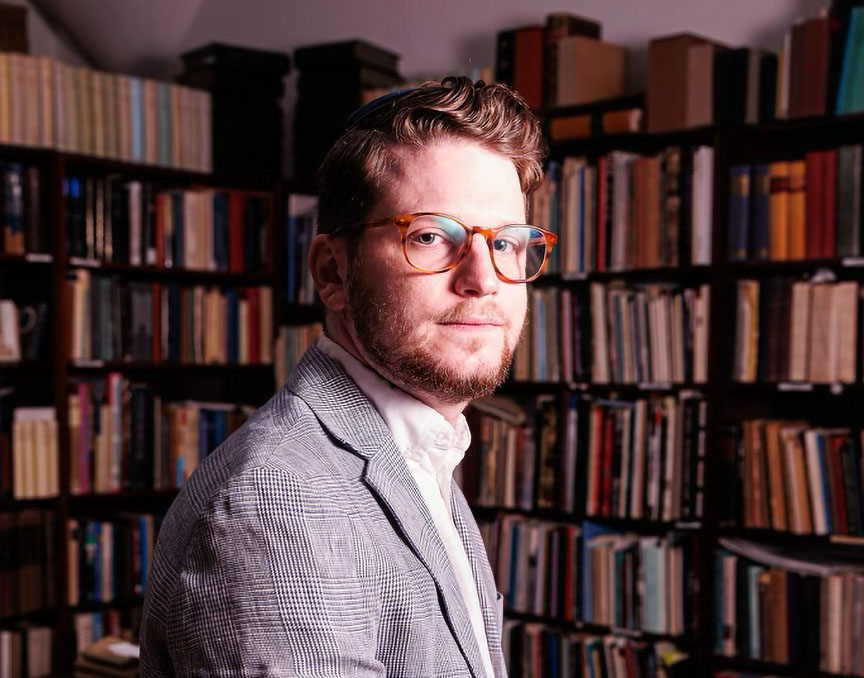
More than three decades after the collapse of the USSR, the Jews of the Soviet Union continue to be somewhat of a mystery to American Jews, characterized by stereotypes many of us heard growing up. Marat Grinberg’s recent book, “The Soviet Jewish Bookshelf” is a pioneering study that helps dispel some of these myths through his exploration of Soviet Jewish identity in the second half of the twentieth century. But first, we need to understand these myths.
Growing up in the 1970s and early 1980s, I remember my father and my Jewish day school teachers describing the community Elie Wiesel famously called “The Jews of Silence.” They were “living in terror and yearning for piety,” as Grinberg describes what we believed, and they lacked the means of forging and expressing a meaningful Jewish identity in an atheist, antisemitic communist state. A few brave souls, known as “Refuseniks,” fruitlessly demanded the right to emigrate, and then paid dearly, as they were often shipped off to the gulag, with Natan Sharansky becoming their figurehead. This was my understanding of Soviet Jewry: heavily Russified, but still bearing a historical stain of enforced Jewish difference.
We campaigned for their right to leave, and as if by some miracle, the number of exit visas granted by the Soviet government increased significantly in the 1980s. The subsequent collapse of the USSR opened the floodgates of emigration with most settling in the United States and Israel. Here in the West, this marked the first genuine encounter between the Jews descended from those who had been smart enough to have “run away from the tsar’s army” and those we viewed as having had the misfortune of staying behind and enduring Sovietization, the Holocaust, and state-sponsored antisemitism. Once we got to know the Jews of silence, another stereotype emerged. “They are not real Jews,” said many among the older generations. Terror and silence meant the loss of their Judaism, which had become little more than a stamp in their internal passport marking them as Jewish.
As a professional historian I understand that such stereotyping lacked a foundation in reality. Our encounter with Soviet Jewry was an encounter with the unfamiliar; they were people we expected to be like us, but were not. “Not real Jews” actually meant “a different kind of Jew; a different kind of Jewishness.” We enter the fourth decade of the post-Soviet era and it is now abundantly clear that Soviet Jews came to America saturated with Jewishness. They have preserved much from their Soviet past while integrating into the surrounding Jewish communities. They are among the staunchest supporters of Israel, they have filled the ranks of Russian Jewish studies in the academy, they have produced dozens if not hundreds of novels and memoirs recounting their experiences as Jews, over there and over here, thus burying the two stereotypes of the post-War era once and for all.
That said, we historians actually know very little about Soviet Jewish identity and culture after Stalin. Since the 1990s we have done so much work documenting the first few decades of communist rule, a violent time of terror for the USSR’s millions of citizens, but also an era that unshackled the Jews from tsarist oppression to enjoy mobility. Yiddish culture flourished and antisemitism was constrained, until Stalin finally turned on the Jews toward the end of his rule. There are dozens of great historical works on the making of early Soviet Jewry.
So what happened after Stalin besides state-sponsored antisemitism? We know that “silence” fails to capture the rich tapestry of Jewish life, but it is only now that scholars are turning their attention to these crucial years. Enter Grinberg’s “The Soviet Jewish Bookshelf,” which demonstrates that “Soviet Jewishness was much more than an empty sign or only the sign of victimhood and persecution.” “Soviet Jewish consciousness,” writes Grinberg, “consisted of far more than the remains of Yiddishkeit, linguistic, culinary, and religious, on the one hand, and total Russification and Sovietization on the other.” Through a novel approach (no pun intended) Grinberg analyzes Soviet Jewish “reading practices,” with the “bookshelf” as the site for the construction of Soviet Jewishness.
Anyone who has been inside a Soviet apartment understands the significance of the “bookshelf.” For Russians (and the numerous ethnic minorities of the USSR), the bookcase was the centerpiece of the home. It occupied the same physical and cultural space occupied by the American television. While we tuned into “All in the Family” and “The Tonight Show,” the Russians ritualistically displayed and consumed the collected works of Pushkin, Tolstoy, Dostoevsky and select Soviet writers. Soviet Jews had their own bookcase, overlapping with the Russian bookcase, sharing in the Russian canon, but with a distinctive Jewish flavor, much as American Jewish culture is American yet recognizably Jewish. “The bookshelves in Soviet Jewish homes had their own unique installments and were predominantly the only visible signs of Jewishness,” writes Grinberg.
The bookshelf of course wasn’t merely for display. Soviet citizens were insatiable readers—anything they could get their hands on, “objects of desire to be hunted and possessed,” as Grinberg puts it. And because the Communist regime claimed the right to control the production and distribution of culture, the Soviet population needed to develop a unique approach to consuming books: They had to learn how to read between the lines. They needed to know what to glean from a text that might be saying one thing, but carried a different meaning for the reader, whether intended by the author who used what scholars have called “Aesopian language” to send an impermissible message to their audience, or inadvertent, with the reader extracting valuable information that was not intended to be valued. Although scholars have long known about these Soviet reading strategies, Grinberg’s work brings something new to the table: that Soviet Jews had a distinct way of reading between the lines, of organizing their bookshelves, of crafting a Jewish identity through what was otherwise a universal Soviet practice. They imbued Soviet Jewishness with positive content, not governed by terror, silence and vague memories of a past buried in the rubble of a decimated shtetl.
They imbued Soviet Jewishness with positive content, not governed by terror, silence and vague memories of a past buried in the rubble of a decimated shtetl.
Grinberg’s book is organized chronologically and thematically into five chapters. After briefly exploring the roots of the bookshelf in the 1930s, he moves on to the post-Stalin era and divides his chapters by the type of material on the bookshelf, illustrating how each type required a slightly different approach to reading between the lines. Some of the authors he discusses, such as the German Jewish novelist Lion Feuchtwanger, are virtually unknown in the west today, yet played pivotal role in shaping Jewish reading habits. Others, most notably Ilya Ehrenburg and Vasily Grossman, are known to us because they documented World War Two and the Holocaust, and were able to publish within the constraints of Soviet censorship. Some authors were nobodies, party propagandists who published material that was overtly hostile toward Judaism and Israel, but were nevertheless consumed by Jews because their work was about Jews, and thus a source of otherwise unavailable knowledge. And some literary works were rarely read, yet kept on the bookshelf because they were explicitly Jewish. For Grinberg, reading strategies and the physical configuration of the bookshelf were intertwined in complex ways, all of which contributed to the creation of a Soviet Jewish identity.
A few examples will suffice. Feuchtwanger’s historical novels, though set in antiquity, bore “witness to the tumultuous twentieth-century history via memory,” serving as the site “of veiled yet rich Holocaust remembrance and the notions of witnessing and survival it brought forth.” They also contain, argues Grinberg, Aesopian nods to “Jewish nationalism,” a subject maligned in official Soviet discourse. For texts that contained no explicit Jewish references, such as Il’ia Il’f and Evgenii Petrov’s satiric Ostap Bender novels, there were insider gestures to Jewishness that “remained simply unknown to the majority of readers.” At the other end of the spectrum were works translated into Russian from Yiddish and Hebrew. The former were displayed but rarely read, serving as symbolic artifacts, “markers of Jewishness both for their Jewish owners and at times others, whom they let into the private space of their Soviet apartments.” Conversely, Hebrew translations were hard to come by and were voraciously consumed because they were the only way Jews could obtain knowledge about Israel. Such works became increasingly valuable after 1967, when the government embraced militant anti-Zionism and expunged such books from the libraries.
The regime’s anti-Zionism and its incessant publication of literature vilifying Israel is perhaps the greatest irony in Jewish reading practices that Grinberg unearths. Such literature was everywhere, with hundreds of books, pamphlets, and brochures printed in the millions. Yet Soviet Jews collected and devoured these works because they were about Israel. Their antisemitic spin only increased the Jewish attachment to the Jewish state. One person whom Grinberg interviewed describes the experience of having read a book titled “The Army of Israel: A Tool of Imperialist Aggression,” through which he “learned about the structure of IDF, its victories, strengths, and advances, and even the Hebrew terms for ranks provided in the appendix. The book was instrumental in elevating his Jewish pride.” Reading between the lines encompassed a number of strategies, all of which helped Soviet Jews build a distinct identity that was at once Soviet and tied to a global Jewish community.
Marat Grinberg’s “The Soviet Jewish Bookshelf” is mandatory reading for students of Soviet and Jewish history. There is also much in it for the larger Jewish reading public for whom Soviet Jews remain a paradox, a story that is not merely of survival, but also of fashioning a durable path to Jewishness uniquely their own. In the Soviet context, the “People of the Book” became the “People of the Bookshelf.”
Jarrod Tanny is an associate professor and Charles and Hannah Block Distinguished Scholar in Jewish History at the University of North Carolina, Wilmington. He is the author of “City of Rogues and Schnorrers: Russia’s Jews and the Myth of Old Odessa” (Indiana University Press) and the founder of the Jewish Studies Zionist Network.





















 More news and opinions than at a Shabbat dinner, right in your inbox.
More news and opinions than at a Shabbat dinner, right in your inbox.